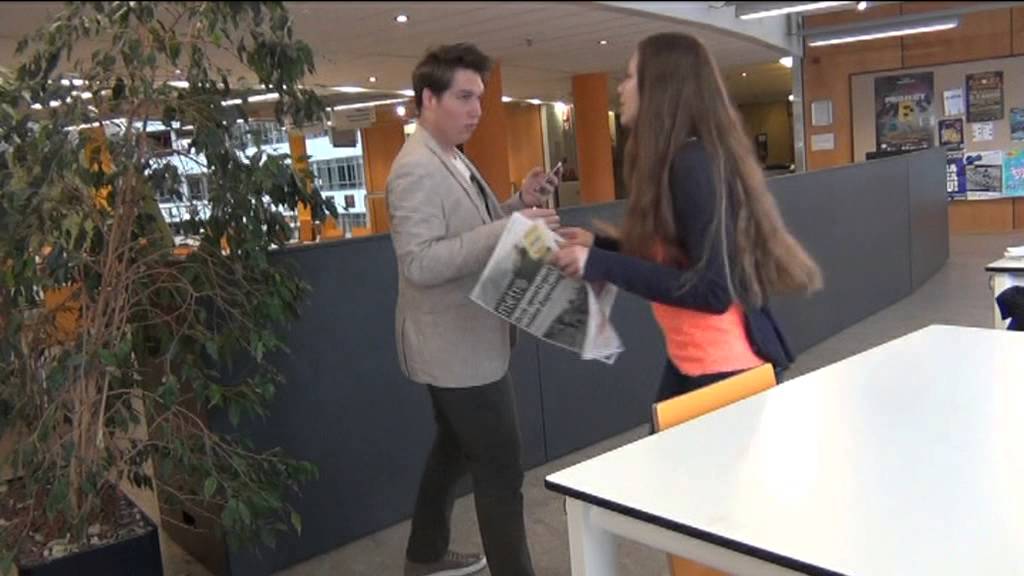Gestures Around the World
Summary
TLDRThis script explores the fascinating world of gestures, highlighting how their meanings can vastly differ across cultures. It illustrates that a simple thumbs-up can signal approval in Britain, be obscene in Brazil, or represent money in Japan. The script also delves into unique gestures for drinking alcohol, like the U.S.'s hand gesture, France's nose twist, and Russia's throat click. It humorously points out the Bulgarian head shake for 'yes' and South Asia's head tilt for acknowledgment or uncertainty, emphasizing the complexity and diversity of non-verbal communication.
Takeaways
- 🌐 Gestures have different meanings across cultures, highlighting the importance of understanding local customs.
- 👍 In Britain, a thumbs up signifies that everything is okay, while in Brazil, it's considered an obscene gesture.
- 💰 In Japan, a thumbs up is associated with money, demonstrating the economic significance of gestures.
- 📢 In Italy, people use hand gestures to emphasize a point, showing the communicative role of gestures.
- 🕒 In Jordan, a gesture can mean 'wait a second,' indicating the use of gestures for time-related expressions.
- 🥃 Drinking alcohol has associated gestures, such as in the U.S., where one might imitate drinking, and in France, twisting the nose to signify intoxication.
- 🇷🇺 In Russia, a unique gesture of clicking the throat is used to indicate drinking or getting drunk.
- 🤔 A Russian gesture of scratching the ear by going around the back of the head is used to say 'you're making things too complicated'.
- 🙆♂️ Nodding for 'yes' and shaking the head for 'no' are common gestures, but they are not universal, as seen in Bulgaria and South Asia.
- 🇧🇬 Bulgarians shake their head for 'yes' and nod with a click of the tongue for 'no', illustrating cultural variations in affirmative and negative responses.
- 🇮🇳 In South Asia, a head tilt from side to side is used to acknowledge the speaker, and can also convey approval or uncertainty.
Q & A
What does the 'thumbs up' gesture mean in Britain?
-In Britain, the 'thumbs up' gesture signifies that everything is okay.
How is the 'thumbs up' gesture perceived in Brazil?
-In Brazil and some other places, the 'thumbs up' gesture is considered obscene.
What does the 'thumbs up' gesture represent in Japan?
-In Japan, the 'thumbs up' gesture is used to represent money.
What gesture do Italians use to emphasize a point?
-Italians might use a specific hand gesture to emphasize a point, but the script does not detail what that gesture is.
What does a certain gesture mean in Jordan that is different from other places?
-In Jordan, a gesture that might be used to emphasize a point in other cultures can mean 'wait a second'.
What is a common gesture for drinking or getting drunk in the U.S.?
-In the U.S., a common gesture for drinking or getting drunk is not specified in the script.
How do the French indicate drinking or getting drunk?
-The French grab and twist their nose to indicate drinking or getting drunk.
What gesture do Russians use to signify drinking or getting drunk?
-Russians click their throat as a gesture to indicate drinking or getting drunk.
What unique gesture do Russians use to say 'you're making things too complicated'?
-Russians scratch their ear by going around the back of their head to say 'you're making things too complicated'.
How do nodding and shaking the head differ in meaning from their common interpretations?
-While nodding for 'yes' and shaking the head for 'no' are common, this is not universal as demonstrated by Bulgarians and South Asians who have different meanings for these gestures.
What does the head shaking gesture mean for Bulgarians?
-For Bulgarians, shaking their head means 'yes', which is the opposite of its common interpretation.
How do South Asians acknowledge someone speaking to them with a gesture?
-South Asians tilt their head from side to side as a way to acknowledge the person speaking to them, which can also indicate approval or uncertainty.
Outlines

Cette section est réservée aux utilisateurs payants. Améliorez votre compte pour accéder à cette section.
Améliorer maintenantMindmap

Cette section est réservée aux utilisateurs payants. Améliorez votre compte pour accéder à cette section.
Améliorer maintenantKeywords

Cette section est réservée aux utilisateurs payants. Améliorez votre compte pour accéder à cette section.
Améliorer maintenantHighlights

Cette section est réservée aux utilisateurs payants. Améliorez votre compte pour accéder à cette section.
Améliorer maintenantTranscripts

Cette section est réservée aux utilisateurs payants. Améliorez votre compte pour accéder à cette section.
Améliorer maintenantVoir Plus de Vidéos Connexes

The Definitions Of Hand Gestures Around The World

The surprising paradox of intercultural communication | Helena Merschdorf | TEDxNelson

Global and Cultural Issues Affecting Communication

An Introduction to the Psychology Of Dreams

Intercultural communication- non-verbal communication

7 CULTURAL DIFFERENCES IN NON-VERBAL COMMUNICATION (English for Specific Purposes) || Kimjoy Balogna
5.0 / 5 (0 votes)
